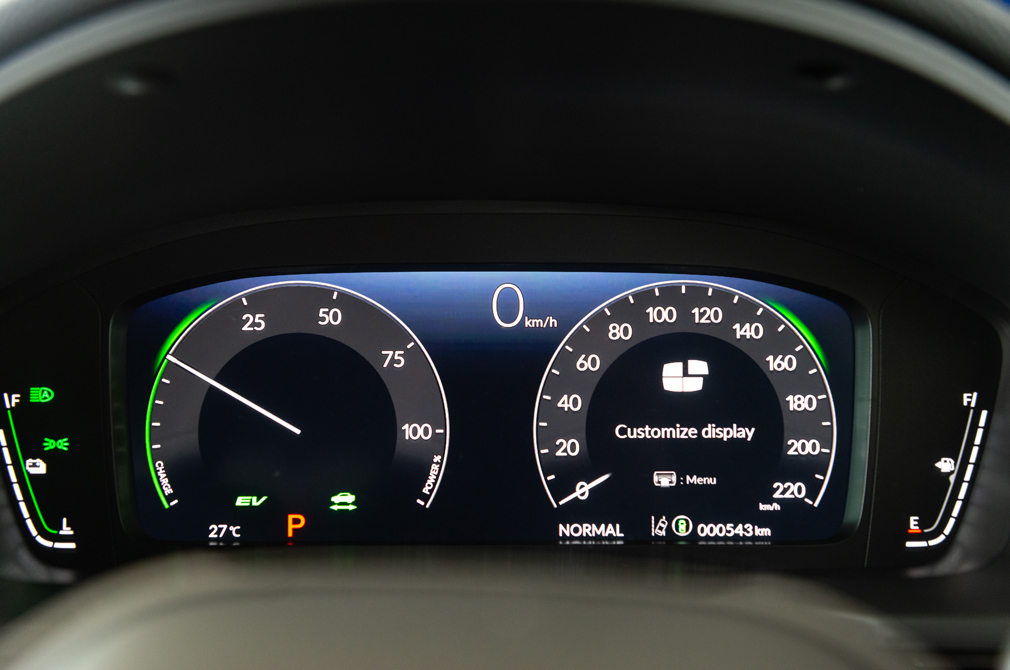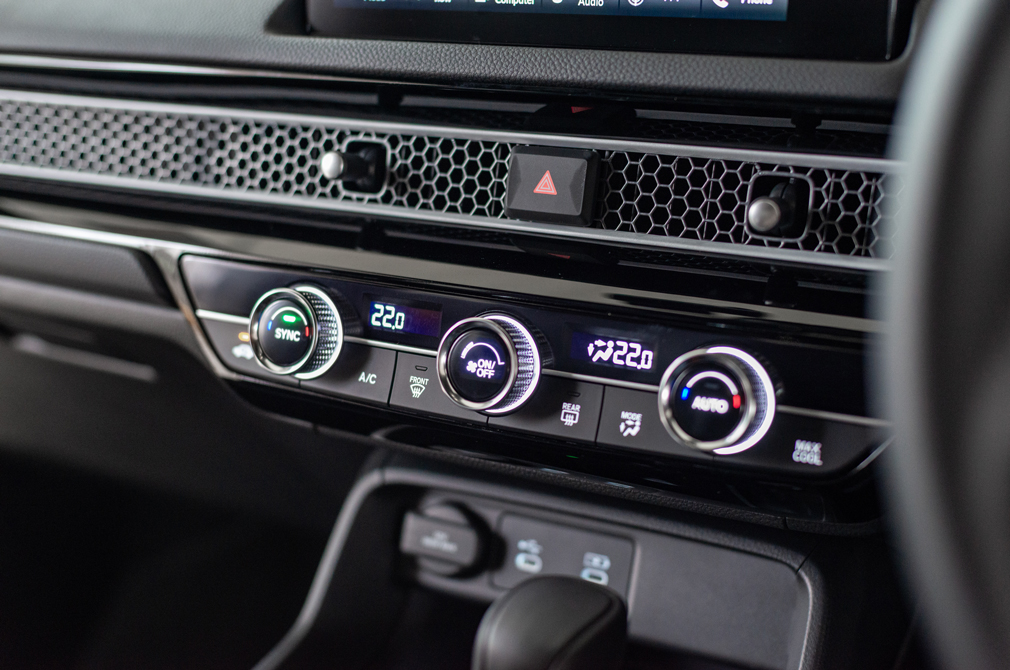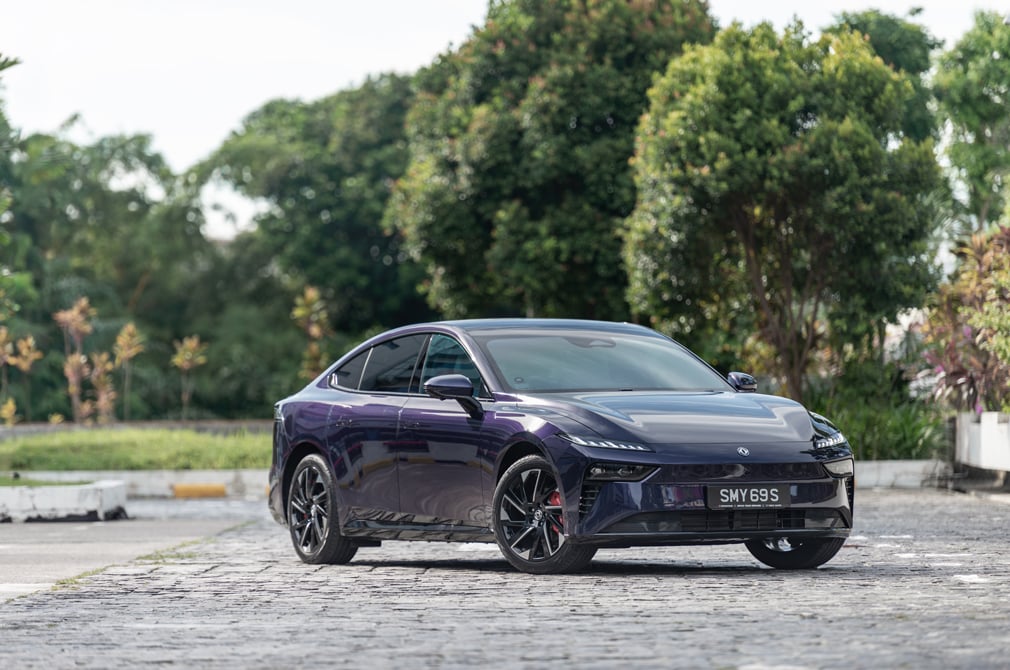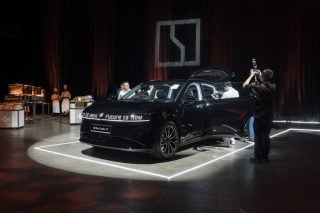The Honda Civic Hybrid 2.0 e:HEV makes a convincing proposition with its sweet handling and fun-to-drive nature, but its OMV makes it a tough sell.
The last time a Civic Hybrid was officially sold here 13 years ago, and unfortunately, it never became popular because COEs back then were also high.
That FB generation Civic also paled in comparison to the preceding (and hugely popular) eighth-generation FD model.
The good news today, however, is that the current Civic has returned to its roots, with design and build quality once again taking centre stage. Performance is back in the spotlight, too, especially with the new Civic Hybrid now in the lineup.

CIVIC’S SPORTY INTENTIONS
Unless you’re talking about a Porsche model, it’s unlikely that you’ll find the terms ‘hybrid’ and ‘performance’ used in the same sentence. Yet one look at the new Civic Hybrid, officially called the Civic e:HEV, could have you thinking this is a sportier version of its normal sibling.
The front end, for instance, certainly gives off Type-R vibes. A honeycomb covers the grille and air-intake. It also gets LED head lights as standard. The Civic e:HEV also comes with a sportier rear bumper, spoiler, and one size larger wheels than the one on the Civic 1.5.
You wonder how this helps its purpose as an efficient fuel-saving sedan, as a body kit adds aerodynamic drag, while bigger wheels mean higher rolling resistance, even if they are fitted with eco-friendly tyres.
The only clues to this Civic’s true identity as a hybrid are the blue-accented ‘H’ badges, and the ‘e:HEV’ designation on the boot lid. If an owner removed these, it would be harder to tell the difference between it and the regular Civic.

THAT FAMILIAR FEELING
None of these sporty aspirations are to be found inside, though, save for one: The seating position, which is relatively low. Even if you’ve been driving sedans, it’s hard to miss this.
The driving position is spot on – keen drivers will immediately be able to tell that the placement of the steering wheel, pedals, and gearshift lever were all something that the engineers and designers paid close and careful attention to. Of the Civic’s segment rivals, only the Mazda 3 comes close.
While the regular Civic has manually adjustable seats, the Civic Hybrid has powered ones, with eight-way adjustment for the driver and four-way adjustment for the front passenger. Minimal adjustments are needed to find your ideal position, and once set, you’ll find the controls naturally coming to hand.

A lot of things feel intuitive here, from the little joysticks for adjusting the airflow direction, to the buttons on the steering wheel for the cruise control and audio functions.
This intuitiveness, however, doesn’t always carry over to the infotainment system and instrument panel. For instance, although the former has menu tiles for easy navigation, you won’t be able to change the layout of the instrument panel in the ‘Meter Setup’ sub-menu.
Strangely, this option is instead found in the instrument cluster, via the steering wheel scroll wheel on the right. There’s also a scroll wheel on the opposite side that lets you customise the content you wish to display on the left.
The external cameras need to be upgraded, too. Though these are factory-fitted, they are outdated and have comparatively low resolution. This also makes the LaneWatch system less useful, since it’s harder to see traffic from your left blind spot.

Speaking of LaneWatch, Honda should have long updated this to also display live footage from the right side, which is what Hyundai and Kia offer on several of their models, with higher resolution to boot.
That said, Apple CarPlay works seamlessly and flawlessly, and the factory audio system doesn’t sound half-bad. For convenience, there are also charging options aplenty: Two USB-C ports, a wireless charging pad, and a 12-volt socket ensure devices have plenty of juice.
Although the Civic Hybrid’s cockpit has more features than the non-hybrid model, both cars’ backseats are identical. That means plush surfaces and plenty of legroom to stretch out, along with air-con vents for better cooling.

NIMBLE PERFORMER
‘Cool’ is also one way to describe how the Civic Hybrid drives. Beneath its bonnet is a naturally aspirated 2.0-litre four-cylinder that’s paired to Honda’s e:HEV system, which is comprised of an electric motor that’s fed by a lithium-ion battery.
The Civic Hybrid reduces consumption and emissions by having the electric powertrain either propel the car by itself, help the engine, or a combination of both. When conditions are right and there’s enough charge in the battery, the car runs on electricity alone.
The engine also mostly stays off when the car idles in traffic. But when the driver demands more power, the electric motor supplements the engine. And since an electric motor doesn’t have to be revved like an engine does to make power, it is able to fill performance ‘gaps’ at low speeds.

With 141bhp from the petrol engine, and the electric motor delivering up to 135kW (181bhp) and 315Nm of torque, the Civic Hybrid feels effortless, even off the line. Put the car in ‘Sport’ mode and the synthetic ‘rorty’ noises even sound engaging. Acceleration is smooth and progressive and equal to the inputs of your right foot.
Honda doesn’t provide acceleration figures, but I estimate it takes less than 10 seconds to complete the century sprint. That’s more than enough for a daily runabout. Honda claims a combined consumption figure of 21.7km/L, though in practice I managed up to 18.4km/L in mixed conditions, which is still impressive.

The Civic Hybrid’s true talents, though, shine when the roads turn twisty. With MacPherson strut suspension in front and a multi-link setup in the rear, the car takes to curves like a fish to water.
Body control is good, considering that the dampers are pliant rather than firm. Directional changes inspire confidence, too, as the car naturally moves towards the driver’s chosen line. It is clear the car has the potential to be sharper still.
Add accurate steering and as dialled-in driving position to this mix, and you can’t help but smile, knowing that the designers and engineers have worked so hard and managed to please you, the driver.

THE BIG QUESTION
The Civic Hybrid has almost everything a keen driver would look for in a compact sedan. It looks good, it’s relatively efficient, and it performs well. For fans of the Civic model (and the Honda badge), this is a welcome return to form.
However, Honda could have done more still. More intuitive infotainment, better cameras, and an improved LaneWatch system are what today’s buyers expect. At this price point there are other options in the market that can offer more for less.
Indeed, cost is the Civic Hybrid’s biggest obstacle. By many measures, it is an excellent car, and the fact that it can leave a smile on your face is awesome. But with a price tag this high, acquiring it will require one to think long and hard before taking the plunge.
This story was first published on Sgcarmart.
Honda Civic Hybrid 2.0 e:HEV (A)
ENGINE 1993cc, inline-4, 16-valves, petrol-electric hybrid
MAX POWER 141hp at 6000rpm
MAX TORQUE 186Nm at 4500rpm
POWER TO WEIGHT 97.9hp per tonne
GEARBOX e-CVT
0-100KM/H Not available
TOP SPEED Not available
CONSUMPTION 21.7km/L (combined)
PRICE INCL. COE From $227,999
AGENT Kah Motor









































